Abstract
We have investigated the transport of tritiated indole-3-acetic acid (IAA) in intact, red light-grown maize (Zea mays) coleoptiles during gravitropic induction and the subsequent development of curvature. This auxin is transported down the length of gravistimulated coleoptiles at a rate comparable to that in normal, upright plants. Transport is initially symmetrical across the coleoptile, but between 30 and 40 minutes after plants are turned horizontal a lateral redistribution of the IAA already present in the transport stream occurs. By 60 minutes after the beginning of the gravitropic stimulus, the ratio of tritiated tracer auxin in the lower half with respect to the upper half is approximately 2:1. The redistribution of growth that causes gravitropic curvature follows the IAA redistribution by 5 or 10 minutes at the minimum in most regions of the coleoptile. Immobilization of tracer auxin from the transport stream during gravitropism was not detectable in the most apical 10 millimeters. Previous reports have shown that in intact, red light-grown maize coleoptiles, endogenous auxin is limiting for growth, the tissue is linearly responsive to linearly increasing concentrations of small amounts of added auxin, and the lag time for the stimulation of straight growth by added IAA is approximately 8 or 9 minutes (TI Baskin, M Iino, PB Green, WR Briggs [1985] Plant Cell Environ 8: 595-603; TI Baskin, WR Briggs, M Iino [1986] Plant Physiol 81: 306-309). We conclude that redistribution of IAA in the transport stream occurs in maize coleoptiles during gravitropism, and is sufficient in degree and timing to be the immediate cause of gravitropic curvature.
Full text
PDF
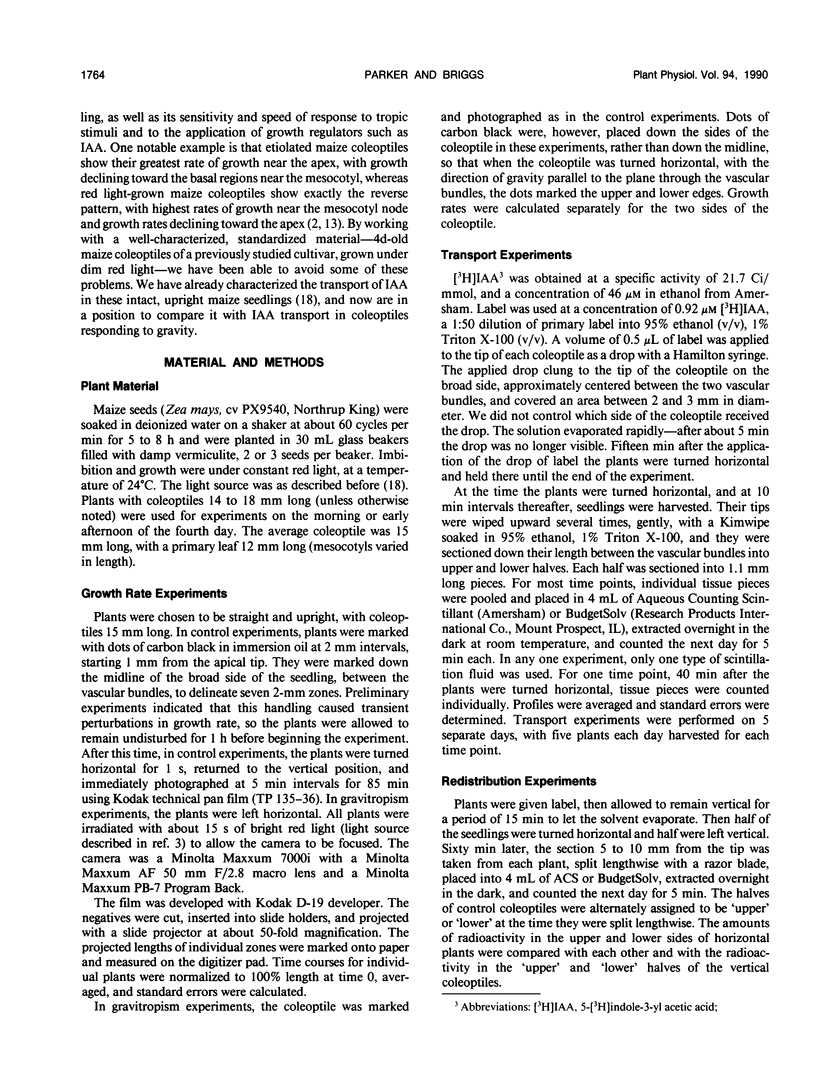
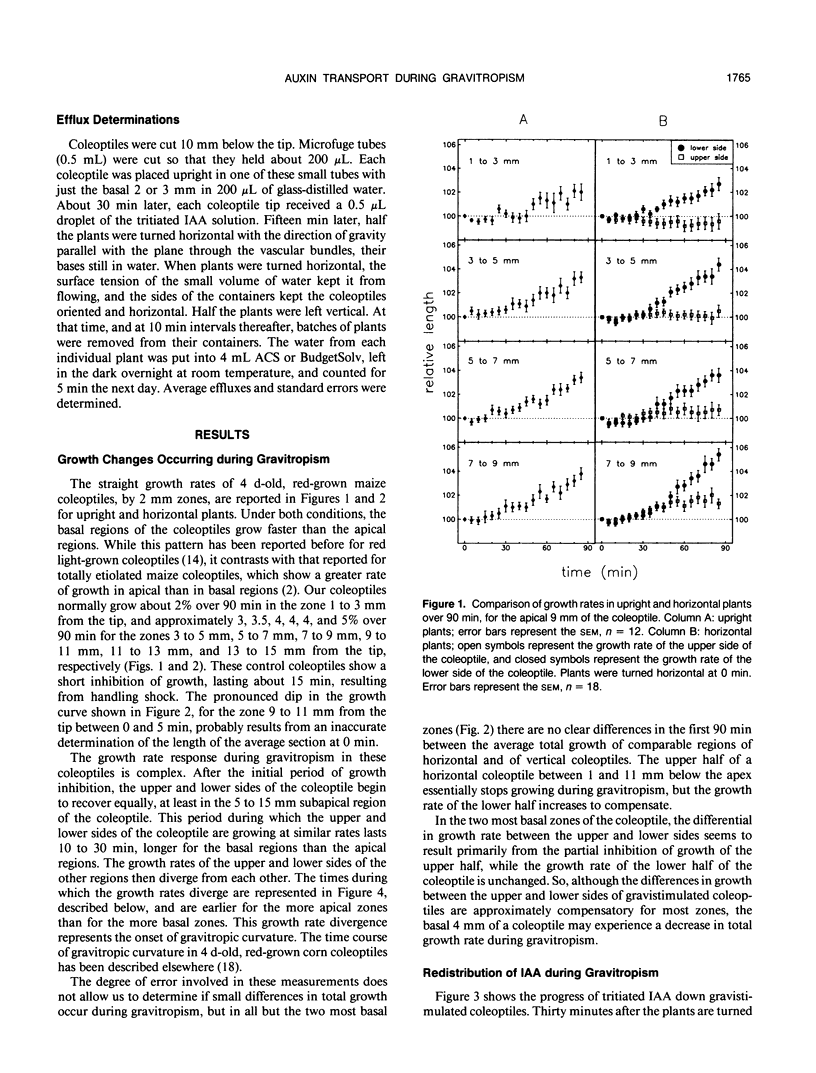
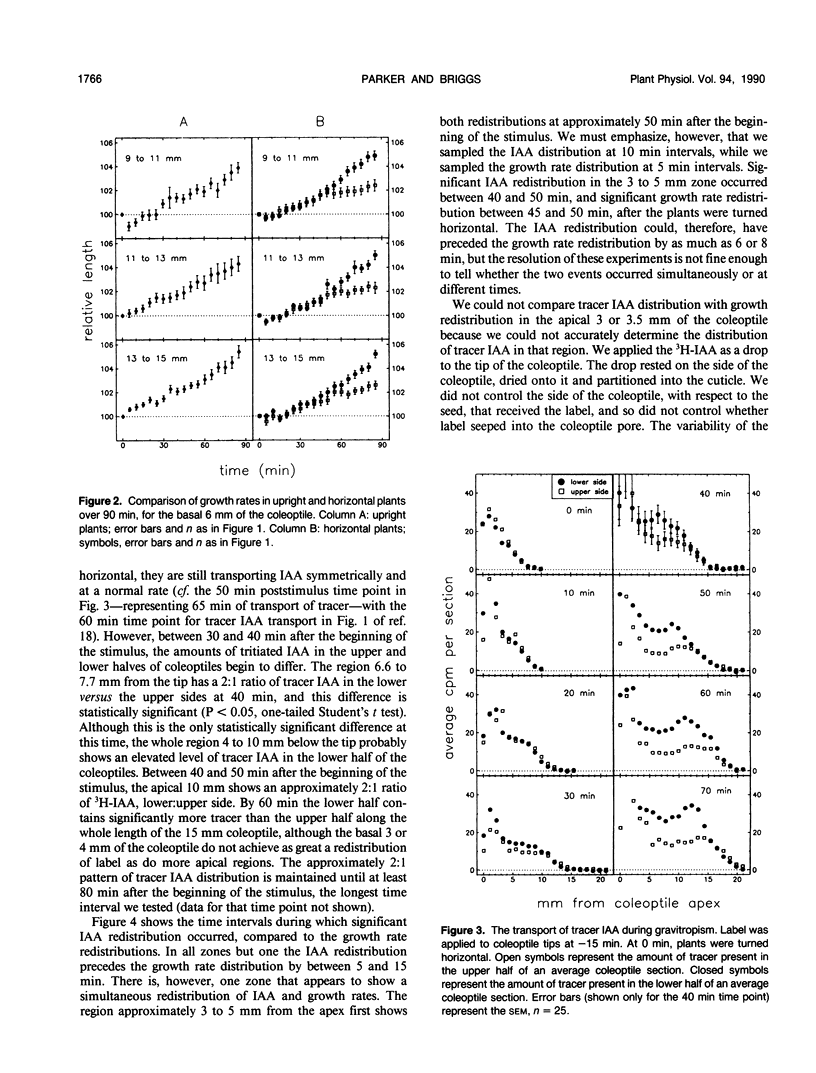
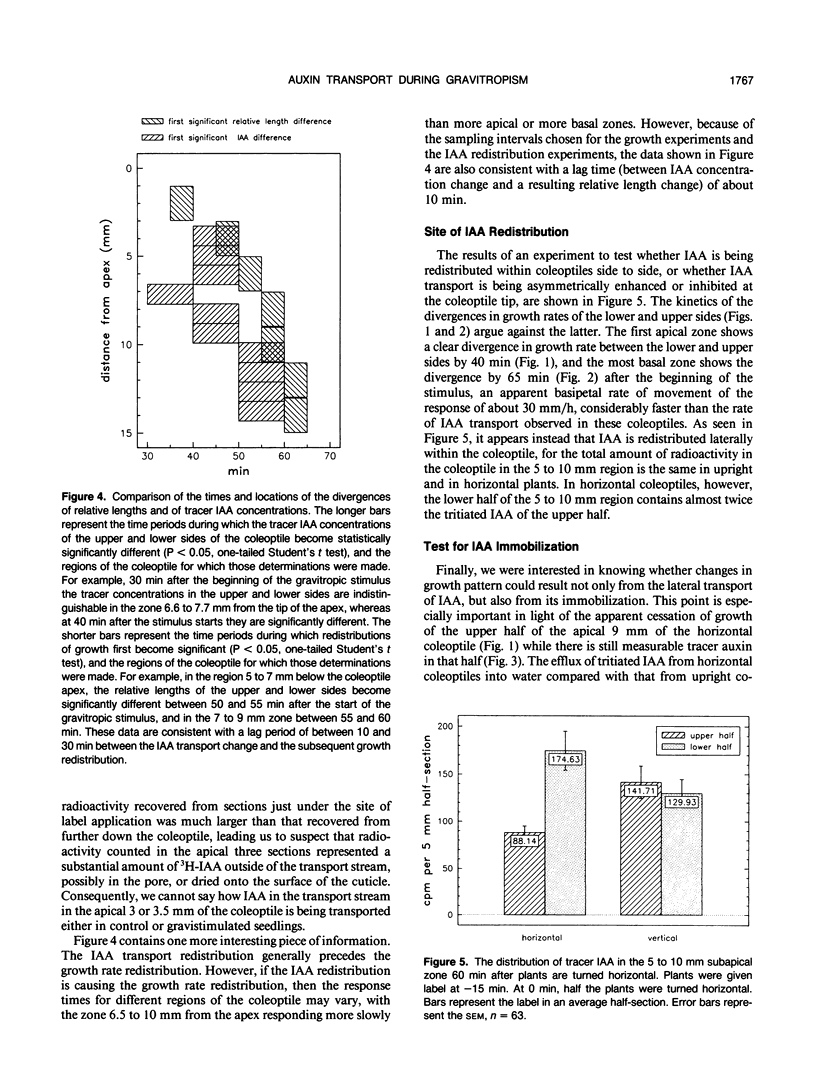
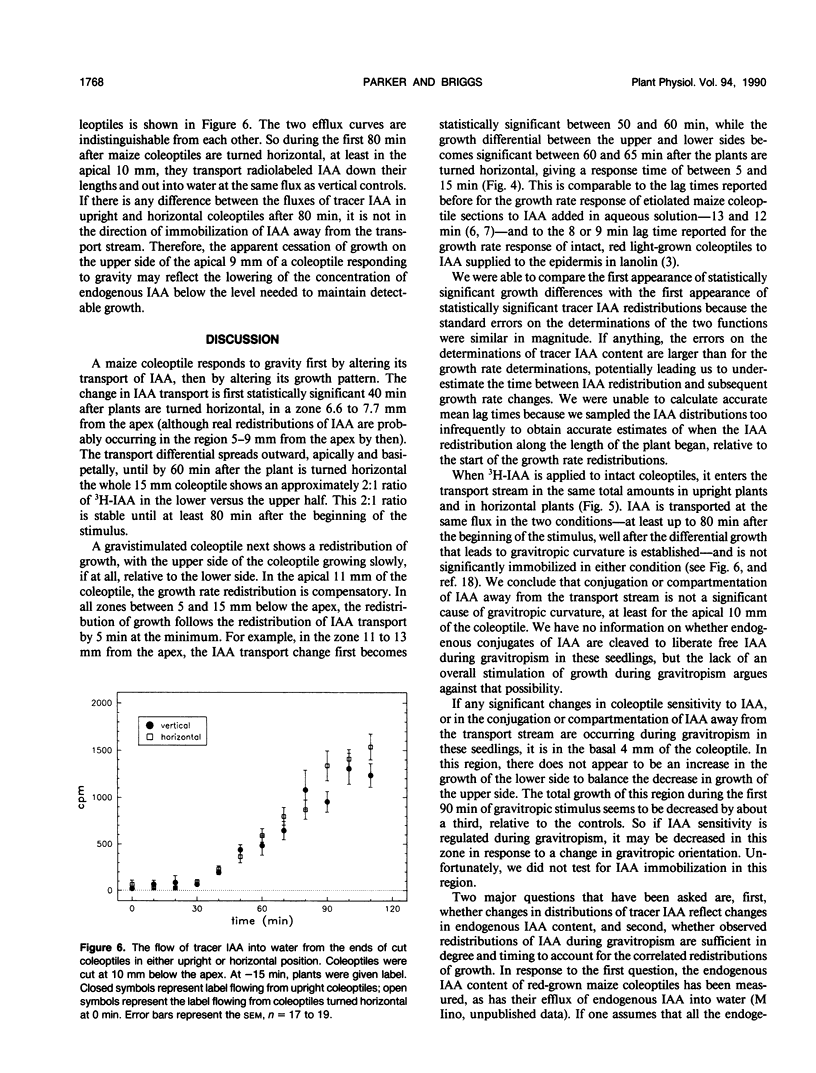
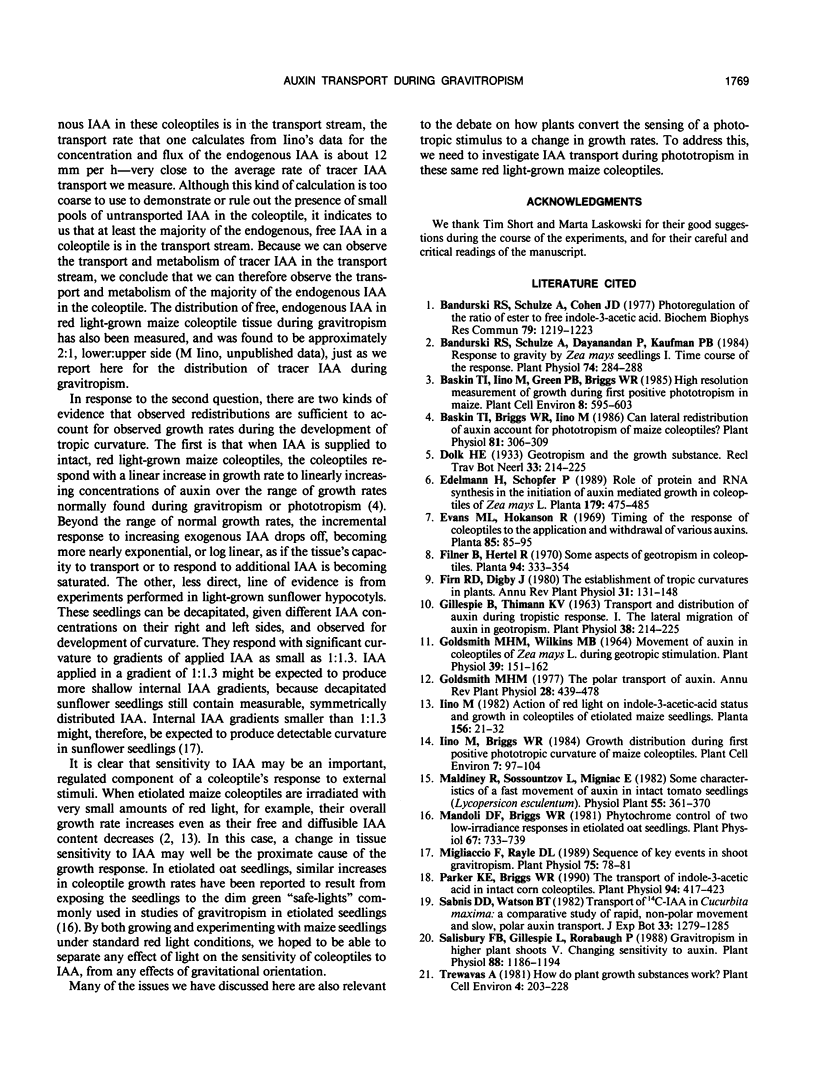
Selected References
These references are in PubMed. This may not be the complete list of references from this article.
- Bandurski R. S., Schulze A., Cohen J. D. Photo-regulation of the ratio of ester to free indole-3-acetic acid. Biochem Biophys Res Commun. 1977 Dec 21;79(4):1219–1223. doi: 10.1016/0006-291x(77)91136-6. [DOI] [PubMed] [Google Scholar]
- Bandurski R. S., Schulze A., Dayanandan P., Kaufman P. B. Response to gravity by Zea mays seedlings. I. Time course of the response. Plant Physiol. 1984;74:284–288. doi: 10.1104/pp.74.2.284. [DOI] [PMC free article] [PubMed] [Google Scholar]
- Baskin T. I., Briggs W. R., Iino M. Can lateral redistribution of auxin account for phototropism of maize coleoptiles? Plant Physiol. 1986 May;81(1):306–309. doi: 10.1104/pp.81.1.306. [DOI] [PMC free article] [PubMed] [Google Scholar]
- Gillespie B., Thimann K. V. Transport & Distribution of Auxin during Tropistic Response. I. The Lateral Migration of Auxin in Geotropism. Plant Physiol. 1963 Mar;38(2):214–225. doi: 10.1104/pp.38.2.214. [DOI] [PMC free article] [PubMed] [Google Scholar]
- Goldsmith M. H., Wilkins M. B. Movement of Auxin in Coleoptiles of Zea mays L. during Geotropic Stimulation. Plant Physiol. 1964 Mar;39(2):151–162. doi: 10.1104/pp.39.2.151. [DOI] [PMC free article] [PubMed] [Google Scholar]
- Mandoli D. F., Briggs W. R. Phytochrome control of two low-irradiance responses in etiolated oat seedlings. Plant Physiol. 1981 Apr;67(4):733–739. doi: 10.1104/pp.67.4.733. [DOI] [PMC free article] [PubMed] [Google Scholar]
- Migliaccio F., Rayle D. L. Sequence of key events in shoot gravitropism. Plant Physiol. 1984 May;75(1):78–81. doi: 10.1104/pp.75.1.78. [DOI] [PMC free article] [PubMed] [Google Scholar]
- Parker K. E., Briggs W. R. Transport of indoleacetic Acid in intact corn coleoptiles. Plant Physiol. 1990 Oct;94(2):417–423. doi: 10.1104/pp.94.2.417. [DOI] [PMC free article] [PubMed] [Google Scholar]
- Salisbury F. B., Gillespie L., Rorabaugh P. Gravitropism in higher plant shoots. V. Changing sensitivity to auxin. Plant Physiol. 1988;88:1186–1194. doi: 10.1104/pp.88.4.1186. [DOI] [PMC free article] [PubMed] [Google Scholar]


